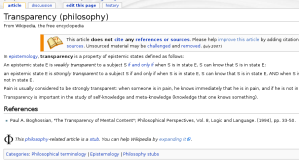On Top Documentary Films I came across Stephen Fry‘s excellent five-part series about language: Fry’s Planet Word (BBC Two series homepage). You may watch it all on YouTube:
- Part 1. Babel. In this first episode, Stephen seeks to uncover the origins of human language and how and why we are the only species on the planet to have this gift. From attempts to teach chimps to speak to the so-called singing mice who have been given the human language gene, Stephen uncovers to what extent our brain is uniquely hard-wired for language.
- Part 2. Identity. What is it that defines us? Stephen argues that above all, it is the way we speak. Be it a national language, a regional dialect or even class variation – we interpret and define ourselves through our language. From markets in Kenya to call centers in Newcastle, Stephen charts the shifting patterns of lingua franca and the inexorable spread of Globish (Global English).
- Part 3. Uses and Abuses. This programme looks at the ways language is used and abused. While not everyone approves of bad language, Stephen learns that swearing plays an important part in human communication the world over. He undergoes an MRI scan and discovers the parts of the brain associated with swearing – and meets a sufferer of Tourette’s and a stroke patient who swear they can’t help using the f-word.
- Part 4. Spreading the Word. In this programme, Stephen Fry explores the written word. Writing is a great invention – making it possible to communicate across space and time. Without writing we would have no history and very little technology. Stephen discovers the earliest writing – cuneiform – at the British Museum, and learns how our alphabet came from the Phoenicians.
- Part 5. The Power and the Glory. In this programme, Stephen Fry celebrates storytelling. It has been with us as long as language itself and as a species, we love to tell our stories. This desire to both entertain and explain has resulted in the flowering of language to describe every aspect of the human condition. Stephen asks just what makes a good story and why some writers just do it better. He reveals what stories make him shiver with joy or, conversely, shudder with horror.



